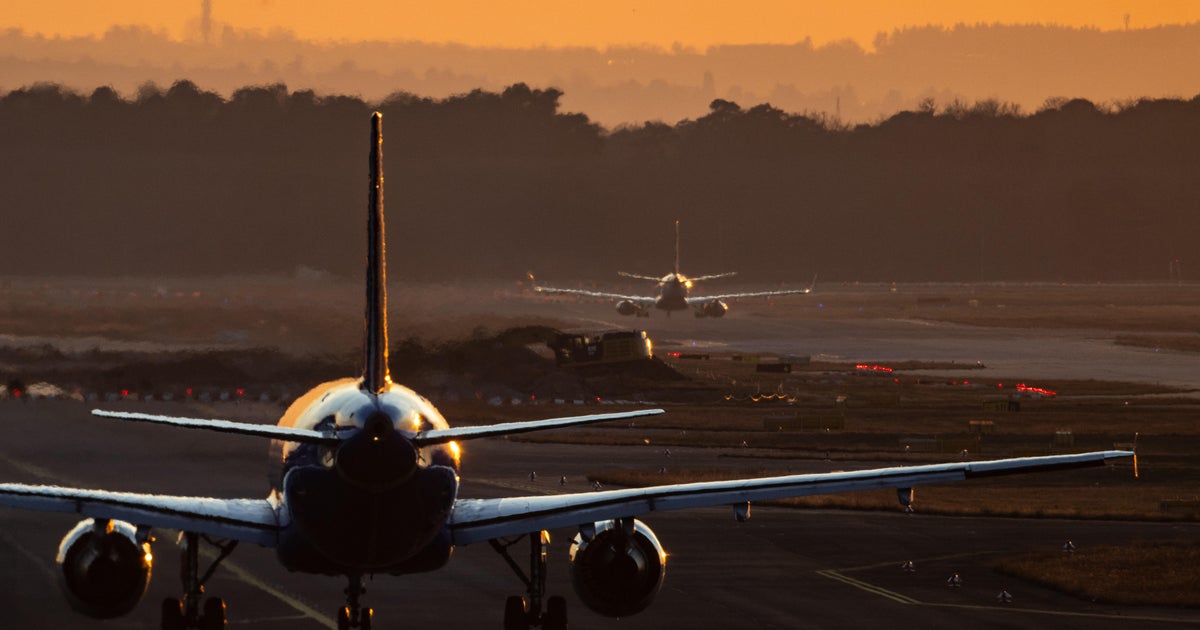Turks and Caicos travel advisory updated by U.S. State Department — here’s what to know about the agency’s warnings

The U.S. State Department updated its travel advisory for the popular Caribbean tourist destination Turks and Caicos Islands this week to include a warning about the territory’s laws against firearms and ammunition.
A British Overseas Territory in the North Atlantic, Turks and Caicos consists of eight major islands, with the majority of its population living on the main island, Providenciales.
Here’s what to know about the warning and how the State Department issues travel advisories.
Turks and Caicos travel advisory
The State Department’s travel advisory for Turks and Caicos Islands is a Level 2, advising Americans to exercise increased caution if they visit.
The primary reason for the Level 2 advisory is crime, the State Department says. The warning says most crime happens in Providenciales, the most populated island in the British territory.
“Police may have limited investigatory resources,” the advisory says.
An update on March 4 added a warning on Turks and Caicos’ strict laws prohibiting firearms and ammunition, including single bullets that may be brought by mistake.
“Police strictly enforce these laws, even at the airport when travelers are leaving,” the advisory says. “Travelers face arrest, jail time, and heavy fines.”
Multiple Americans were arrested on the islands in 2024 for possessing ammunition and faced possible prison sentences of 12 years or more. After often monthslong ordeals, they were released on suspended sentences and ordered to pay fines.
What are the State Department’s travel advisory levels and what do they mean?
The State Department has four levels of travel advisories:
- Level 1: Exercise normal precautions
- Level 2: Exercise increased caution
- Level 3: Reconsider travel
- Level 4: Do not travel
The agency issues travel advisories for every country in the world. Factors considered in setting advisory levels include crime, terrorism, civil unrest, the risk of wrongful detention, health, the likelihood of a natural disaster and current events, the State Department says.
Level 1 is the lowest advisory and indicates there is some risk in any international travel. Level 2 means there are “heightened risks to safety and security,” which could apply to specific areas of the country.
Level 3 advises Americans to reconsider traveling to the nation because of “serious risks to safety and security.” Level 4 is the highest advisory level indicating there is a “greater likelihood of life-threatening risks.” The department advises Americans to write a will and leave DNA samples if they decide to travel to a Level 4 nation in preparation for possible worst-case scenarios.
Some nations could have multiple levels, with parts of the country more of a concern. For example, the advisory for Mexico, as of March 7, has specific levels for each state within the country, ranging from Level 1 to Level 4.
In each advisory, the State Department explains the factors contributing to the level designation, identifies possible areas of more risk and gives advice on what to do if you decide to travel to that country.
Examples of countries with each travel advisory level
Here are examples of countries in each advisory level, as of March 7:
Level 1: Canada, Australia, Ireland, Portugal, Argentina and multiple Caribbean islands, including Aruba and St. Lucia, are among the Level 1 countries.
Level 2: Popular European destinations, including France, Italy, Spain, the United Kingdom and Germany, have Level 2 advisories. Other examples are mainland China, South Africa, Morocco, Peru and The Bahamas.
Level 3: Countries with Level 3 advisories include Colombia, Egypt, Guatemala and Jamaica. Most of the Level 3 nations include specific higher risk areas that the State Department says to avoid.
Level 4: The State Department has designated more than a dozen nations as Level 4, advising Americans not to travel to them. They include Russia and Ukraine due to Russian President Vladimir Putin’s invasion of Ukraine. Others at Level 4 include Syria, Iraq, Sudan and South Sudan, the Democratic Republic of the Congo, Venezuela and Haiti.
How often does the State Department review travel advisories?
The State Department says it reviews Level 1 and 2 travel advisories at least every 12 months and Level 3 and 4 advisories at least every six months.
“A Travel Advisory will also be updated anytime there is a change in U.S. government posture, normally as it relates to ongoing security concerns,” the department says.
How to look up travel advisories around the world
Americans can find a searchable list of the State Department’s travel advisories on the agency’s website. There is also an updating map that provides a visual display of the advisories around the world.
Related
Canada says too little, too late as Trump flip-flops on…
Nadine Yousif and Ali Abbas AhmadiBBC News, TorontoWatch: Canadian liquor store clears out US alcohol in response to tariffsNot long after the US imposed their
Vietnam, Thailand, and Philippines Among Top Asian Destinations Most-Searched by…
Home » Philippines Travel News » Vietnam, Thailand, and Philippines Among Top Asian Destinations Most-Searched by American Travelers, Driven by Surge in Viet
Trump tariffs tarnish ties: Americans anxious about travel to Canada…
Will Trump's tariffs on Canadian goods entering the U.S. affect tourism at home, tarnishing ties Canadians and Americans have shared for decades? It's a fair qu
Looming Trump travel ban strikes fear in Afghans who worked…
Expectations that President Donald Trump will soon bar Afghans and Pakistanis from entering the United States has set off panic among Afghans who were promised











